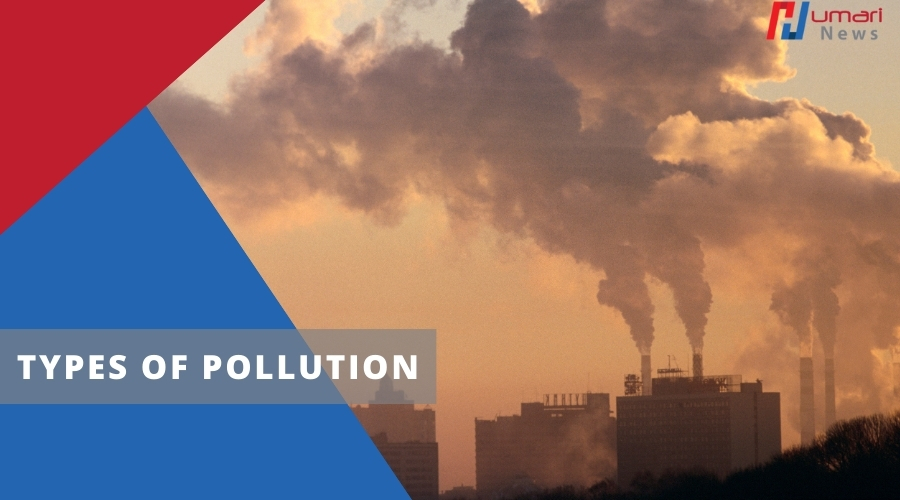Environmental pollution is the most common issue all over the world. It encompasses a variety of harmful substances released into the environment, including air, water, and soil pollution, which collectively threaten human health, biodiversity, and the climate. As we move further into the 21st century, pollution has escalated, exacerbating the ongoing global environmental crisis.
The current environmental conditions reflect the urgent need for action to reduce and prevent further pollution.
Types of Environmental Pollution

Pollution manifests in various forms, with the most common being air, water, soil, and plastic pollution. Each has its own sources and devastating consequences for ecosystems and human life.
- Air Pollution: One of the most widespread forms of pollution, air pollution results from the release of harmful chemicals and particulates into the atmosphere. The primary sources include emissions from vehicles, industrial activities, burning fossil fuels, and deforestation.
Major air pollutants include carbon dioxide (CO2), methane (CH4), sulfur dioxide (SO2), nitrogen oxides (NOx), and particulate matter (PM). These pollutants not only contribute to global warming but also lead to severe respiratory and cardiovascular diseases in humans.
- Water Pollution: Contamination of water bodies—rivers, lakes, oceans, and groundwater—primarily results from industrial discharges, agricultural runoff, and improper waste disposal. Chemicals like pesticides, heavy metals, and plastics enter water systems, making them toxic to marine life and unsafe for human consumption.
Water pollution leads to the destruction of aquatic ecosystems and contributes to the global water crisis, where millions lack access to clean drinking water.
- Soil Pollution: Soil pollution is mainly caused by the overuse of pesticides and fertilizers in agriculture, improper waste disposal, and industrial activities. Contaminants in the soil reduce its fertility and affect the growth of crops, which in turn impacts food security.
Soil pollution can also result in the contamination of groundwater, further exacerbating environmental damage.
- Plastic Pollution: A growing environmental challenge, plastic pollution is the accumulation of plastic objects and particles (such as plastic bottles, bags, and microplastics) in the Earth’s environment.
Plastics are non-biodegradable, meaning they persist for hundreds of years, harming wildlife and entering the food chain as marine animals mistakenly ingest microplastics. Plastic pollution has reached alarming levels, particularly in oceans, where massive “garbage patches” are forming, such as the Great Pacific Garbage Patch.
Current Environmental Conditions
The current state of the environment paints a dire picture of a world overwhelmed by pollution. According to the World Health Organization (WHO), around 7 million people die annually from exposure to air pollution. In urban areas, particularly in developing countries, air quality continues to deteriorate due to rapid industrialization, population growth, and increased vehicle emissions. Major cities, such as Delhi, Beijing, and Mexico City, often report dangerously high levels of air pollution, far exceeding safe limits.
Water pollution also remains a significant issue, with over 80% of the world’s wastewater being discharged into the environment without adequate treatment. This has resulted in the contamination of freshwater resources, leading to waterborne diseases and severe ecological damage. In addition, plastic waste is now present in virtually every marine ecosystem, from coastal waters to the deepest ocean trenches.
A recent report by the Ellen MacArthur Foundation estimates that by 2050, there could be more plastic than fish in the oceans if current trends continue.
The effects of soil pollution are seen in the decline of arable land and reduced agricultural productivity, leading to food insecurity in many regions of the world. The overuse of chemical fertilizers has degraded soil quality and biodiversity, with many species of beneficial insects, such as bees, facing extinction.
Beyond pollution, climate change is accelerating the environmental crisis, as rising global temperatures, melting ice caps, and extreme weather events become more frequent. Pollution, particularly from the burning of fossil fuels, is a major driver of climate change, releasing greenhouse gases that trap heat in the atmosphere.
Solutions and Future Outlook
While the situation may seem bleak, there are solutions available to reduce environmental pollution and restore the health of the planet. Governments, organizations, and individuals must all play a role in addressing the pollution crisis.
- Government Regulation: Stronger environmental policies and regulations are needed to reduce emissions, manage waste, and promote sustainable practices. Implementing stricter air quality standards, incentivizing the use of renewable energy, and banning single-use plastics are steps that can have an immediate impact.
- Sustainable Practices: Shifting toward sustainable agricultural practices, such as organic farming and reducing pesticide use, can improve soil health and reduce pollution. Additionally, adopting circular economy principles—where materials are reused, recycled, or composted—can drastically reduce plastic and industrial waste.
- Technological Innovation: Green technologies, such as electric vehicles, renewable energy sources (solar, wind, and hydro), and advanced water treatment systems, are critical in the fight against pollution. Investing in research and development of these technologies will enable societies to transition to a cleaner and more sustainable future.
- Individual Action: On a personal level, individuals can contribute by reducing their carbon footprint, minimizing plastic use, recycling, conserving water, and advocating for environmental policies.
Small changes in lifestyle, such as using public transport, reducing meat consumption, and supporting eco-friendly products, collectively make a significant difference.
The current environmental condition is a wake-up call for humanity to act decisively in combating pollution. While the challenges are vast, the solutions are within reach. By embracing sustainable practices, advancing green technologies, and enforcing stricter environmental regulations, we can mitigate the impacts of environmental pollution and create a healthier, more sustainable world for future generations.







